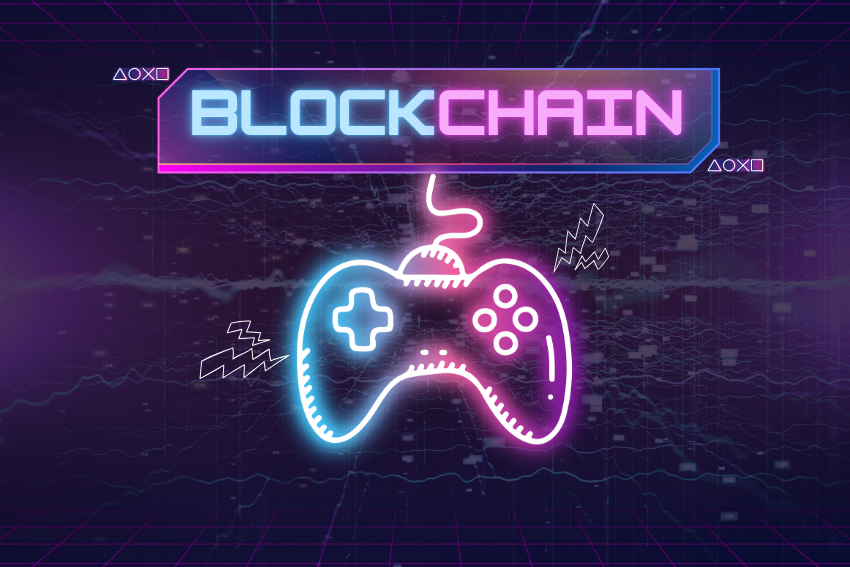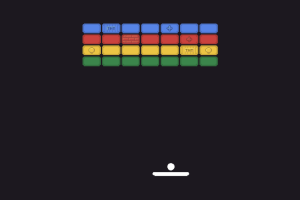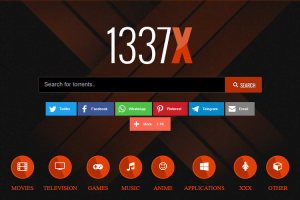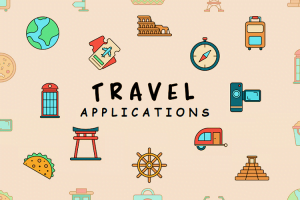The gaming industry is growing rapidly. People take an interest in games. There was a time when people liked games that offered only fun. The basic arcade games to high-end quality games give immersive experiences to the players. But now games are not only entertainment, they also give money. In today’s digital age, blockchain gaming is a new journey for players. This game is developed by blockchain technology.

These games offer ownership, transparency, P2E models and decentralization. They transform traditional gaming. This article will explain the impacts of blockchain in traditional gaming, developers, players and the economy. This technology is not about playing games; it is about digital assets, earning, and trading. Players are not only players, they are becoming stakeholders, investors and creators. These games offer you crypto rewards after winning a level.
What is Blockchain Gaming?
Blockchain gaming is a video game. It uses blockchain technology. Blockchain game development services offer to collect information securely and transparently. It supports digital currencies such as Bitcoin. In blockchain game development, player has ownership of their gaming assets. These items can be NFTs. These non-fungible tokens give in-game assets as unique. Players can earn crypto rewards and money by playing the game. Players can trade these items on the gaming marketplace.
The blockchain gaming offer:
- True ownership
- Play-to-earn model.
- Open marketplaces
- Transparency
- Community control
- Smart contracts
- Boost sales.
- Earning potentials
Traditional Gaming: How It Works
In traditional games, every control is in the developers’ and companies’ hands. These games are for fun. These games never offer money or controls. For console or mobile app:
- Players spend money to buy games or in-game items.
- Players do not own items; these are locked inside the game.
- Developers can ban accounts or remove items anytime.
- No way to earn money directly from playing.
Examples include:
- PUBG
- Call of Duty
- Fortnite
- FIFA
- Candy Crush
While these games are fun and high-quality, they don’t offer the financial benefits and control that blockchain games do.
Blockchain Gaming: Different from Traditional Gaming
In traditional gaming, you can earn or buy every game asset, like weapons, characters. These items are in particular games. If these games shut down, you will lose all the game assets. Blockchain-based gaming offers what you earn or buy, and you can store these items in a digital wallet. People can trade them in for other games. Players can also earn real-world income through tokens, rewards, and NFTs. Blockchain gaming stands out from traditional gaming in several areas.
- Ownership of Assets
- Used across multiple games
- Play-to-Earn Model
- Decentralization
- Transparency
- Free trading/reselling
- Community Governance
Positive Effects of Blockchain on Traditional Gaming
Blockchain game development services have some positive aspects:
Real Ownership of Items
The biggest profit of blockchain on traditional gaming is that players can own the game assets. In the traditional games, any game asset that you buy stays in the game and is controlled by the game company. But in blockchain-based gaming, the game item is stored in a digital wallet. If the game company shuts down the game, your item will still be safe.
- Full control of game assets
- Enable use outside
Play-to-Earn Opportunities
Traditional games require an in-app purchase. Blockchain gaming offers a play-to-earn model. You can earn a reward by playing the game. Players can earn tokens and items. This model is helpful for other countries where people find an extra source of income.
- Earn tokens and items.
- Generate extra income.
Ability to Trade and Sell Items
Blockchain game development allows players to trade and sell game assets through a gaming marketplace. You do not need to depend on a game company. If you have any game assets, you can sell them to other players and earn real money.
- Trade and sell game assets.
- Earn real money
Transparent and Secure System
Blockchain technology ensures a secure system. Blockchain game development services
offer to store data on the blockchain is permanent and cannot be changed or deleted. This helps to prevent threats. Players can trust others. You can easily find the reality of the item. Players can find the history of game assets.
- Secure system
- Find the history of assets.
More Power to Players
Blockchain games include community governance. It means that players can vote on any changes. This new feature gives more engagement to the players.
Developers can Make Money
Blockchain offers to developers. They can earn money. In a traditional game, they can depend on game sales or ads. But the blockchain gaming offers earn money by selling NFTs. They create in-game currency.
Challenges and Drawbacks of Blockchain Gaming
Blockchain gaming has some benefits, but has some challenges:
Difficult for Beginners
Blockchain technology can be difficult for beginners. Beginners can’t understand the integration of digital wallets, NFts, and cryptocurrencies. This will harder for engaging people.
Energy and Environmental Impact
Some blockchains use a lot of energy. This raises the environmental impact of blockchain gaming. New blockchain gaming is using energy-saving systems that reduce the problems.
Focus on Earning Instead of Fun
The main goals of traditional games are to enjoy. But blockchain gaming offers the opportunity to earn money. This can turn games into earning games instead of fun.
Risk of Scams and Frauds
Blockchain gaming is a new trend. Many fake developers and projects do scams and fraud to earn money. They collect money without delivering projects. These scams are called Rug Pulls. Many people are afraid of this risk.
Legal Uncertainty
Governments find a way to regulate the blockchain games. They are finding out the taxes charged; children should be allowed to play these games. Until the government clarifies the legal activities. This game should be uncertain.
What Does the Future Look Like?
The Future of blockchain will grow in many aspects:
Easy to Use
Blockchain games can be difficult. But in future, digital wallets and marketplaces will be easy to use.
Items Used in Multiple Games
Blockchain will help to use the same item in multiple games. As you earn game assets, they can be used in other games.
GameFi Will Grow
It stands for game and finance. That means games and finance will bend in future. The player will earn money, tokens and invest in games.
Better Quality Games
As blockchain grows, the flow of money also grows. So, developers will invest in quality. That gives better graphics, smooth games and console-level experiences.
Why Blockchain Gaming Is Attractive to Developers
Game developers are always looking for new ways to grow. Blockchain gaming helps them:
- Earn money through NFTs.
- Create their currency inside the game
- Attract players by earning opportunities
- Involve players in development
Developers can also build games without hiring from big companies or publishers. This gives smaller teams a better chance of success.
Why Players Love Blockchain Gaming
Players enjoy blockchain games because they:
- Truly own their items
- Can make money by playing
- Have the freedom to trade and sell
- Feel part of a community
- Can use their items in more than one game
Which blockchain is Best for Gaming?
The top blockchain for gaming depends on its strength, use cases and projects:
Immutable X
Gods Unchained, Illuvium, and Guild of Guardians are popular games. Developers and players get security with no gas fees.
Why it’s great:
- Built specifically for gaming
- Zero gas fees for NFT minting and trading
- Fast transactions using Layer-2 Ethereum (zk-rollups)
Polygon
The Sandbox, Zed Run, and Aavegotchi offer a dynamic ecosystem.
Why it’s great:
- Low transaction costs
- Fast speeds
- Compatible with Ethereum tools and wallets.
Solana
Star Atlas, Aurory are games that support multiplayer games.
Why it’s great:
- Extremely fast (65,000+ TPS)
- Low fees
- Growing ecosystem
BNB Chain
Mobox, SecondLife games are basic and low-budget games.
Why it’s great:
- Very low fees
- Easy for developers to launch dApps
- Backed by Binance
WAX
Alien Worlds, Farmers World are NFT-based casual games.
Why it’s great:
- Designed for NFTs and digital collectables
- Free transactions for users
- Eco-friendly
Avalanche
Shrapnel, Crabada are the high-end games.
Why it’s great:
- Subnet feature for custom blockchains
- High throughput and low latency
Enjin
Lost Relics and The Six Dragons are asset-based games that are popular for
- In-game assets and NFTs
- Easy tools for developers.
How to develop a game on blockchain?
Blockchain gaming is changing the way of games. The player is not playing the game for fun only. Players have full ownership of in-game items, can earn rewards, and freely trade digital assets. They develop a game on blockchain:
Step 1: Understand the Basics
To develop the game, you have to understand the basics:
- Is it play-to-earning?
- Will it use NFTs?
- Will players earn crypto tokens?
- Single-player, multiplayer, or metaverse-style?
Examples:
- Card battle game with NFT cards
- Virtual land game with token rewards
- RPG or shooter with tradable weapons and skins.
Step 2: Selecting Platform
Select the blockchain platforms that support NFTs, smart contracts, and high transaction speed.
Popular Blockchains for Games
- Immutable X is for no gas fees, NFT-friendly
- Polygons are Cheap, fast, and compatible with Ethereum
- Solana is Higher in speed, lower in cost
- BNB Chain are Cost-effective, developer-friendly
- Avalanche supports High-performance.
Step 3: Game Design
After the platform, now you have to decide on game design that how the game will reward players and manage in-game items.
- Will players earn tokens?
- What’s the value of your NFT assets?
- Will there be staking, renting, or burning mechanisms?
- How do you prevent inflation of your token?
Main Aspects
- Virtual tokens
- NFT items and assets.
- Marketplace for trading assets
Step 4: Create Contracts
You can create Smart contracts with
- NFT creation
- Token
- In-game economy
- Marketplace functions
Tools/Languages:
- Solidity
- Rust
- Vyper
- Remix IDE or Hardhat for testing
Step 5: Game Mechanics
Game using a game engine or web development tools:
Popular Game Engines:
- Unity: 2D/3D games, Web3 plugins
- Unreal Engine: High-end and 3D games
- Godot: Free and open-source engine
- React/ Three/js: Web-based blockchain games
Web3 SDKs/Tools to Connect Game + Blockchain:
- Web3.js or Ethers.js
- Moralis SDK
- WalletConnect or MetaMask for wallet integration
- OpenZeppelin for secure contracts
Step 6: Integrate Wallets and Blockchain
Let players:
- Connect their wallet
- See their NFTs inside the game
- Buy/sell items through the game UI
- Earn tokens for completing tasks
Popular Wallets:
- MetaMask
- Phantom
- Trust Wallet
- WalletConnect
Step 7: Create and Launch NFTs
Create game NFTs like:
- Characters
- Weapons
- Pets
- Skins
- Virtual land
Use tools like:
- OpenSea
- Mintable.app or Rarible
- IPFS/Pinata for decentralised storage
Make sure to:
- Use correct metadata
- Host media on IPFS
- Verify smart contract standards
Step 8: Test Your Game on a Testnet
Test the blockchain game before launching:
- Use test networks
- Test token functionality
- Check wallet interactions
- Debug NFT minting and trading
Step 9: Deploy Smart Contracts on the main Blockchain
Once testing is done, deploy your contracts to the blockchain. Check
- Contract gas usage
- Security
- Set the correct admin addresses
Step 10: Launch the Game and Market It
After development:
- Host the game on a website or app store
- Share it on Web3 communities
- Partner with influencers and blockchain guilds
- Run airdrops or NFT giveaways
Step 11: Maintain, Update & Grow
After the launch, you can
- Add new NFTs and features
- Balance the economy
- Listen to community feedback
- Add governance via DAO
- Enable cross-chain support
Conclusion
Blockchain gaming is not only a trend; it challenges every traditional game by ownership and engagement. It gives digital experiences through traditional games. But still, there are some challenges like scams, regulations and complexity. It gives many powers to the players. Players want powers, rewards in gameplay. Blockchain games provide a digital experience instead of traditional games. Players can own, earn rewards through gaming. As technology grows, both traditional and blockchain games offer something special. This technology is never replacing traditional games, it expands the game industry and opens doors for new experiences, sales and a digital world for the player.
It has major changes in video games. It is the path to play, own, earn and interact with immersive worlds. Players and developers both benefit from this. Blockchain impacts traditional games through ownership, freedom, P2E models, cross-platform, transparency, security and revenue generation to the developers.


